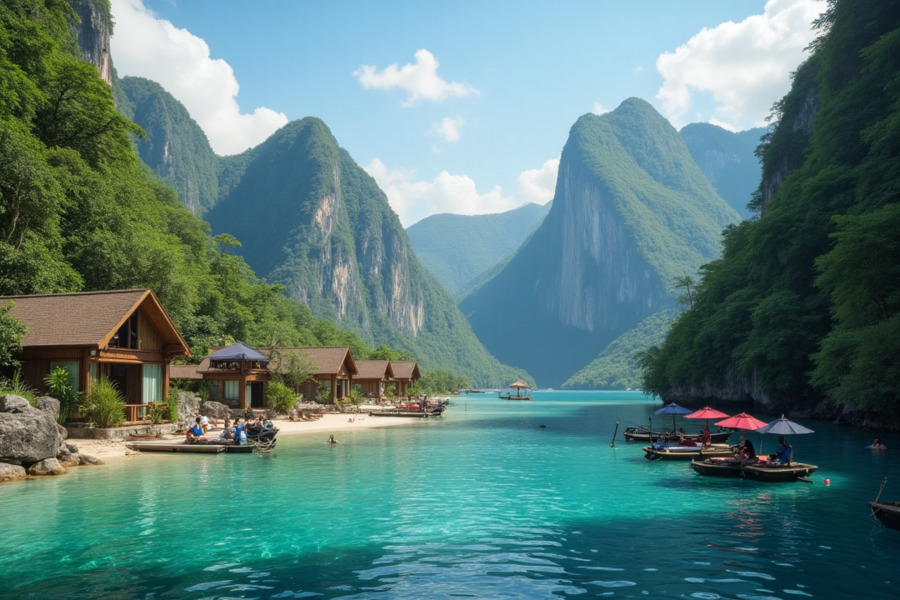≡-Himachal Pradesh Unveils A Sustainable Tourism Initiative Allowing Access To Strategic Border Villages And Historic Passes, Aiming To Balance Preservation And Economic Growth – Viral of Today
<> Viral of Today <>
Home » India Travel News » Himachal Pradesh Unveils A Sustainable Tourism Initiative Allowing Access To Strategic Border Villages And Historic Passes, Aiming To Balance Preservation And Economic Growth Tuesday, June 10, 2025Himachal Pradesh is broadening its tourism landscape by granting controlled entry to several of its remote and culturally significant border areas adjacent to China. In collaboration with central government agencies and security forces, the state has introduced an initiative aimed at unlocking some of the most pristine and historically rich sites in the districts of Kinnaur and Lahaul-Spiti. This development prioritizes the growth of tourism while maintaining national security and safeguarding local traditions.Unveiling Remote Himalayan TreasuresThis new program allows visitors to access previously restricted destinations, including the high mountain passes of Lepcha-La and Shipki-La, the sacred Gue Monastery, and traditional villages such as Khana, Dumti, the Rani zone of Sangla, and Chitkul, the last inhabited settlement close to the border. These locations, nestled deep in the Himalayas, are celebrated for their breathtaking landscapes, spiritual heritage, and vibrant tribal cultures.Historically, passes like Lepcha-La and Shipki-La were vital trade routes that connected Himalayan communities, facilitating cultural and commercial exchange over centuries. Gue Monastery draws attention for preserving a naturally mummified Buddhist monk, a unique relic over 500 years old. The border villages retain authentic lifestyles and customs, offering travelers an immersive experience into the Himalayan way of life.Easing Access While Ensuring VigilanceIn the past, gaining entry into these sensitive border zones required obtaining special permits from the Indo-Tibetan Border Police and the Indian Army, which limited tourism opportunities. Under the new framework, residents and verified tourists can enter these regions by presenting valid identification, with security personnel ensuring regulated and secure movement.This approach maintains a careful equilibrium between facilitating tourism and upholding stringent border security. The state government and defense agencies work closely to enable visitors’ safe access without compromising the region’s sovereignty or safety.Boosting Local Economies Through Sustainable TourismBeyond opening access, the initiative aims to uplift the border communities economically and socially. Infrastructure upgrades, such as improved road connectivity, telecommunications, and environmentally responsible accommodation, are being introduced with a focus on sustainability.The program promotes community-led tourism initiatives, including homestays and guided cultural excursions, providing locals with direct income opportunities. Such ventures are vital to enhancing livelihoods, discouraging migration, and preserving cultural identity in these fragile, high-altitude environments.Environmental protection is integral to the plan, with measures to minimize ecological impact and maintain the pristine quality of the region’s natural surroundings.Celebrating Cultural Richness and Fostering National UnityBy inviting tourists to explore these areas, the initiative helps preserve and promote the unique tribal heritage of Kinnaur and Lahaul-Spiti. It also encourages cultural exchange, fostering greater understanding and respect for indigenous traditions.At the same time, increased interaction strengthens the bond between these remote border populations and the wider nation. The initiative reinforces India’s sovereignty and affirms the presence of vibrant communities living on its frontiers.Addressing Challenges and Looking AheadTourism development in such ecologically sensitive and strategically important zones presents challenges, including harsh weather, difficult terrain, and limited infrastructure. These factors demand innovative and careful planning to ensure visitor safety and comfort.Security concerns remain paramount, necessitating continued collaboration between civilian authorities and military forces. Emerging technologies like drone surveillance and satellite monitoring are being evaluated to enhance security protocols.Future plans include creating educational centers where visitors can learn about the region’s history, culture, and environment, fostering responsible tourism and deeper engagement with local communities.ConclusionHimachal Pradesh’s initiative to open up its border districts for regulated tourism marks a progressive step toward inclusive regional development. By granting access to culturally and strategically important sites, the state is encouraging economic advancement, cultural preservation, and stronger national integration.This thoughtful strategy blends security, sustainability, and community empowerment, offering travelers an opportunity to explore awe-inspiring landscapes while supporting the resilient populations of these Himalayan borderlands.
This information will surprise you!
See also
- Read until the end to discover everything.
- Important information you need to know.
- Interesting facts and helpful tips.
Conclusion
Did you enjoy the news? Keep following us daily!













